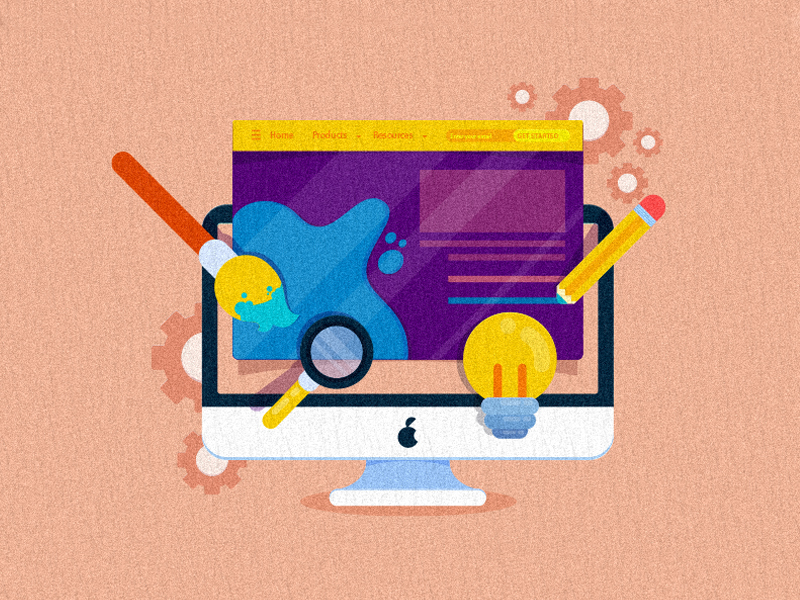The Very Best Sorts Of Web Style to Enhance User Experience and Engagement
In the ever-evolving landscape of electronic communication, the effectiveness of Web style dramatically influences individual experience and engagement. Various style methods, such as minimalist, receptive, and interactive designs, each deal special benefits that can deal with varied user demands. Comprehending which sorts of website design finest offer these goals can be crucial for companies intending to enhance consumer complete satisfaction and retention. However, the concern continues to be: which design elements really reverberate with users and foster meaningful involvement? The exploration of these principles discloses important insights that might redefine your method to Web layout.
Minimal Web Design
As digital landscapes come to be increasingly messy, minimalist website design has actually become an effective technique to improving user experience. This layout philosophy prioritizes simpleness, concentrating on important aspects while getting rid of unneeded interruptions. By making use of ample white space, uncomplicated navigation, and a restricted shade palette, minimal style fosters clarity and guides user attention to crucial material.
The core principle of minimal website design is to create a smooth interaction for individuals. By decreasing cognitive lots, users can promptly comprehend info without feeling bewildered. This direct strategy not just enhances functionality but additionally motivates involvement, as visitors are a lot more most likely to discover a website that is visually appealing and very easy to navigate.
Furthermore, minimal layout commonly highlights typography and imagery, making use of these aspects strategically to share messages properly. In significance, minimal Web design is not just a trend; it is a thoughtful approach that acknowledges the value of user-centered design.
Responsive Website Design
In today's diverse electronic setting, responsive website design has come to be essential for producing a seamless user experience across a plethora of gadgets. As individuals gain access to internet sites on mobile phones, laptops, desktop computers, and tablets, the capability of an internet site to adjust its layout and web content to various display dimensions and resolutions is critical.
Receptive Web design utilizes adaptable grids, pictures, and CSS media queries to guarantee that Web content is presented ideally, despite the gadget utilized. This strategy not just enhances the visual appeal of a web site but also considerably improves use. Customers are more probable to involve with a site that uses a constant experience, as it removes the aggravation of having to zoom in or scroll exceedingly.
Moreover, online search engine, including Google, focus on mobile-friendly internet sites in search positions. By taking on responsive style, businesses can improve their presence and get to a wider target market. This method additionally simplifies internet site maintenance, as a solitary variation of the website can cater to all tools, minimizing the demand for several variations. In recap, responsive Web design is a basic method that enhances user experience, involvement, and general satisfaction.
Interactive Web Style
Receptive Web design lays the groundwork for enhancing customer experience, but interactive website design takes this a step further by engaging users in a much more dynamic method - Aligned Position Web Design. By integrating components such as animations, clickable models, and real-time responses, interactive website design astounds customers, attracting them right into a richer browsing experience
This approach not just cultivates interaction however additionally urges customers to explore material proactively as opposed to passively consuming it. Methods such as gamification, where customers earn benefits for finishing jobs, can significantly enhance the moment invested on a i loved this website and improve overall contentment. Interactive attributes can streamline complex information, making it more absorbable and delightful.

Incorporating interactive layout aspects can also lead to higher conversion rates, as customers are most likely to engage with a website that actively includes them. Aligned Position Web Design. Eventually, interactive Web style changes customer experiences right into memorable journeys, making sure that visitors return time after time
Flat Design
Characterized by its minimalistic method, flat layout highlights simplicity and capability, removing away unnecessary aspects and concentrating on crucial features. This style approach prioritizes functionality, ensuring that customers can browse user interfaces easily and efficiency. By employing a clean aesthetic, flat design gets rid of the mess often found in extra luxuriant styles, therefore improving individual concentrate on content and functionality.
The trademark of level style lies in its use bold colors, straightforward typography, and geometric shapes. These elements add to an aesthetically enticing user interface that is both modern-day and approachable. Additionally, level layout cultivates a sense of clarity, permitting users to determine necessary actions and info without disturbance.
Furthermore, flat design is particularly effective in responsive website design, as its simpleness translates well across different tools and screen sizes. The absence of elaborate appearances and slopes decreases filling times, which is vital for keeping individual engagement. As electronic landscapes remain to advance, flat style remains a relevant choice for developing user-friendly web sites that enhance total experience. By concentrating on vital functions, level layout not only fulfills user needs but likewise urges smooth communication, making it an important element of efficient Web design strategies.
Flexible Web Layout
Flexible Web design customizes the individual experience by creating several dealt with layouts tailored to different display dimensions and tools. Unlike responsive design, which fluidly readjusts a single design, adaptive design utilizes distinct designs for specific breakpoints, ensuring optimum presentation on various platforms. This strategy permits designers find out to focus on the one-of-a-kind characteristics of each gadget, boosting use by supplying specifically what customers require based on their context.
One of the key advantages of adaptive Web design is its ability to enhance tons times and efficiency. By serving customized content and images that fit the user's tool, internet sites can reduce data use and improve loading rates. This is particularly advantageous for individuals with slower links or limited data strategies.

Furthermore, flexible layout helps with a more consistent and controlled branding experience. Because developers produce multiple formats, they can guarantee that the visual aspects align with the brand's identity across different systems - Aligned Position Web Design. This results in a natural customer experience, improving engagement and promoting customer retention
Conclusion
In conclusion, the combination of minimalist, responsive, and interactive website design principles considerably improves individual experience and engagement. Minimal layout promotes clarity and emphasis, while receptive style ensures flexibility across different gadgets, advertising availability. Interactive layout astounds customers through dynamic aspects, encouraging expedition and customization. Collectively, these design approaches contribute to the production of easy to use environments that not only enhance complete satisfaction yet likewise drive greater conversion prices, underscoring their important significance in contemporary Web design approaches.

Minimalist layout cultivates clearness and focus, while receptive style ensures flexibility across numerous tools, advertising ease of access. Jointly, these style approaches contribute to the creation of easy to use atmospheres that not only boost fulfillment but additionally drive greater conversion rates, highlighting their important importance in contemporary Web layout techniques.
Comments on “Aligned Position Web Design: Comprehensive Web Design Solutions for Small and Large Businesses”